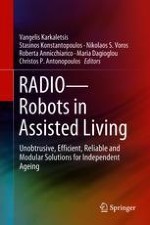2019 | OriginalPaper | Buchkapitel
7. Accelerating AAL Home Services Using Embedded Hardware Components
verfasst von : Georgios Keramidas, Christos P. Antonopoulos, Nikolaos S. Voros, Fynn Schwiegelshohn, Philipp Wehner, Michael Huebner, Diana Göhringer, Evaggelinos Mariatos
Erschienen in: RADIO--Robots in Assisted Living
Aktivieren Sie unsere intelligente Suche, um passende Fachinhalte oder Patente zu finden.
Wählen Sie Textabschnitte aus um mit Künstlicher Intelligenz passenden Patente zu finden. powered by
Markieren Sie Textabschnitte, um KI-gestützt weitere passende Inhalte zu finden. powered by
